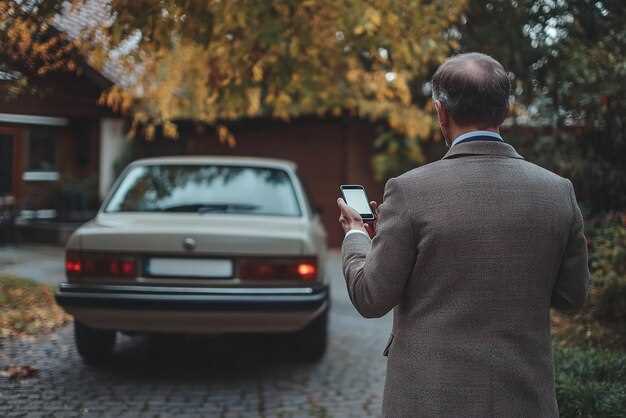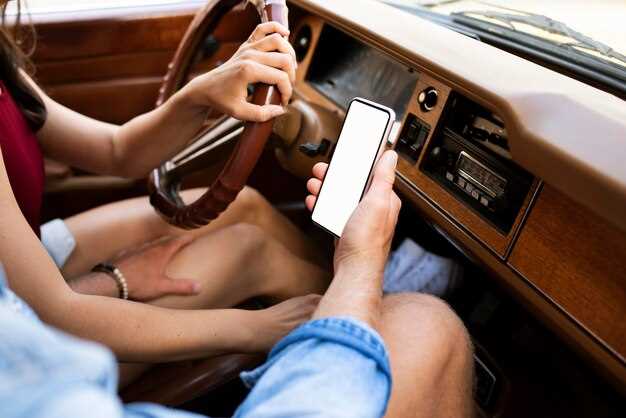
As the classic car market evolves, enthusiasts are increasingly turning to auctions–both online and in-person–as a means to buy or sell vintage vehicles. Each method presents its own set of benefits and drawbacks, making it essential for buyers and sellers alike to weigh their options carefully. Understanding the nuances of each approach can significantly impact the overall auction experience.
Online auctions have gained popularity due to their convenience, allowing participants to bid from the comfort of their homes. With just a few clicks, individuals can access a wide range of classic cars from around the world. However, this convenience comes with its own challenges, such as the inability to physically inspect the vehicle before purchasing. Buyers must rely heavily on the provided descriptions and photographs, which may not always capture the true condition of the car.
In contrast, in-person auctions offer an immersive experience where bidders can engage directly with the cars and meet fellow enthusiasts. This allows for thorough vehicle inspections and the opportunity to ask questions about the car’s history and condition. However, attending an in-person auction often involves travel and additional expenses, which can deter potential bidders. Understanding the pros and cons of each auction format is crucial for making informed decisions in the dynamic world of classic car collecting.
Classic Car Auctions: Online vs In-Person

Classic car auctions have evolved significantly with the advent of online platforms, providing enthusiasts with various options for purchasing their dream vehicles. Both online and in-person auctions offer unique advantages and challenges that buyers should consider before making a decision.
One of the primary benefits of online auctions is the convenience they provide. Buyers can browse and bid on classic cars from the comfort of their homes, accessing a global marketplace without the need for travel. This expands the selection of available vehicles far beyond local offerings, allowing collectors to discover rare models they may not encounter otherwise.
However, online auctions also come with certain drawbacks. Without the ability to physically inspect the vehicle, buyers must rely heavily on photographs and detailed descriptions. This can lead to discrepancies between a car’s appearance online and its actual condition. Additionally, the competitive nature of online bidding can lead to impulsive decisions, potentially causing buyers to overbid or acquire vehicles that do not meet their expectations.
In contrast, in-person auctions allow bidders to physically examine the cars before making a commitment. This tactile experience can be invaluable, enabling potential buyers to assess the craftsmanship, condition, and authenticity of a classic vehicle firsthand. Furthermore, the atmosphere of an in-person auction can create a thrilling environment that enhances the buying experience, with the immediacy of live bidding intensifying the excitement.
Nonetheless, participating in physical auctions requires more planning and commitment. Bidders must account for travel expenses, accommodation, and time spent attending the event. Additionally, the limited geographical scope may restrict access to specific classic cars, making it challenging for buyers seeking a rare find.
Ultimately, the choice between online and in-person classic car auctions will depend on individual preferences and priorities. Each method has its merits, and understanding these can help buyers make informed decisions when navigating the vibrant world of classic car auctions.
Evaluating the Bidding Experience: Less Pressure vs. Real-Time Competition
When it comes to classic car auctions, the bidding experience can vary significantly between online and physical settings. Each format offers distinct advantages and challenges that can impact a bidder’s strategy and comfort level.
Online auctions provide a less pressured environment for participants. Bidders can take their time to evaluate the details of each vehicle, consult with experts, and make informed decisions without the immediate urgency often felt in a crowded auction house. This setting allows for a more calculated approach, where bidders can participate from the comfort of their homes, accessing extensive research materials and resources as they evaluate potential purchases.
Conversely, physical auctions create a sense of real-time competition. The atmosphere is charged with excitement, and bidders are physically present with their competitors, making decisions based on immediate reactions and strategies. This live aspect can fuel adrenaline, potentially leading to higher bids as participants strive to outbid each other. The thrill of witnessing an auction unfold in person can enhance the overall experience, drawing in enthusiasts who relish the intensity of direct competition.
In summary, the choice between online and physical classic car auctions ultimately depends on individual preferences. Those who thrive under pressure and enjoy dynamic interactions may favor the physical experience, while bidders seeking a less stressful environment might prefer the online format. Recognizing these differences can help potential buyers align their bidding approach with the setting that best suits their style and comfort level.
Access to Inventory: Exclusive Offers Online vs. Local Finds at Physical Auctions
When it comes to classic car auctions, the way inventory is accessed can significantly influence the buying experience. Both online and physical auctions present distinct advantages and challenges in terms of the variety and exclusivity of vehicles available.
- Online Auctions:
- Broader Selection: Online platforms often feature a vast array of vehicles from different regions and even countries, providing access to rare models that may not be available locally.
- Exclusive Listings: Many online auctions host exclusive offers, including cars that are up for sale but not listed in physical auctions. This can lead to unique finds that collectors might not encounter otherwise.
- Convenience: Bidders can browse extensive inventories from the comfort of their homes, filtering searches based on preferences like make, model, or price range.
- Real-Time Updates: Online platforms provide immediate notifications on new listings or price changes, keeping bidders informed in real-time.
- Physical Auctions:
- Local Discoveries: Physical auctions allow attendees to discover local gems that may have sentimental value or history tied to the area, creating a unique connection.
- Immediate Evaluation: Inspecting cars in person enables bidders to assess condition and quality firsthand, reducing uncertainties that often accompany online purchases.
- Networking Opportunities: Attending physical auctions offers chances to meet other enthusiasts, collectors, and dealers, fostering a community that can provide valuable insights or leads on future acquisitions.
- Emotional Experience: The atmosphere of a physical auction can enhance the excitement of bidding, as participants can experience the thrill of the auction in real-time alongside other enthusiasts.
Ultimately, whether one opts for online or physical auction formats, understanding the access to inventory is crucial. Each method offers unique opportunities that cater to different preferences and needs in the classic car collecting community.
Finalizing Transactions: Payment Methods and Logistics Differences

When it comes to finalizing transactions for classic car auctions, whether online or in-person, the methods of payment and logistics significantly differ. Understanding these variations is crucial for potential buyers and sellers in making informed decisions.
In physical auctions, payment methods often include cashier’s checks, bank transfers, and sometimes cash. These methods provide immediate assurance to sellers, minimizing the risk of payment disputes. Furthermore, on-site transactions allow buyers to process payments instantly before driving their newly acquired vehicle home or arranging shipping. However, this immediacy can also create pressure on buyers, who must finalize payment in a limited time frame.
Conversely, online auctions cater to a wider range of payment options. Credit cards, PayPal, and various digital payment platforms are commonly accepted, making transactions more accessible to a broader audience. This flexibility can enhance the buying experience, as bidders can choose their preferred method without the need for physical presence. However, online transactions may involve delays in payment processing and potential hold periods, which can hinder immediate transfer of ownership.
Logistics also varies greatly between the two auction formats. In-person auctions often provide a seamless process for vehicle pickup or delivery, given that the buyer is physically present. Arranging transport can be straightforward, often facilitated by the auction house. Conversely, online auctions can complicate logistics; buyers must typically arrange third-party shipping or pickup, which adds extra steps and potential costs. Coordination and communication with freight services become essential for ensuring that the vehicle arrives safely and promptly.
Ultimately, understanding these distinctions in payment methods and logistics can help bidders navigate the classic car auction landscape more effectively, ensuring a smoother transaction experience whether they choose to bid online or attend a physical auction.

